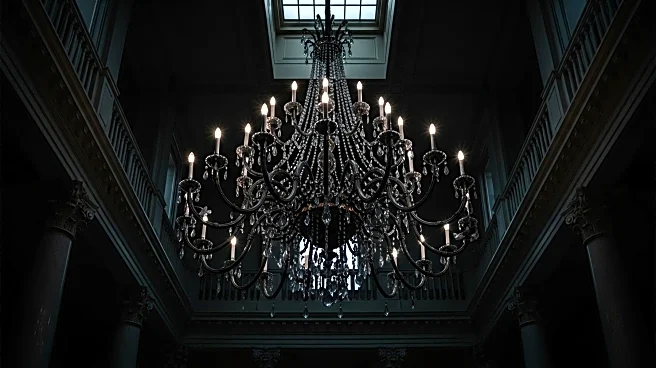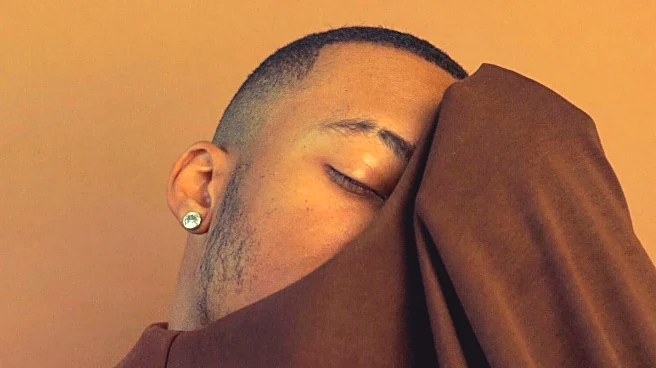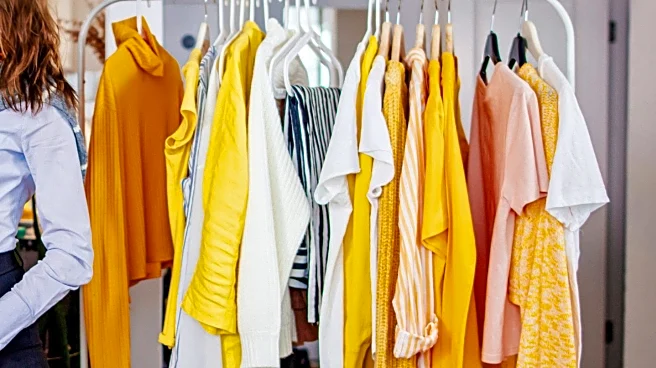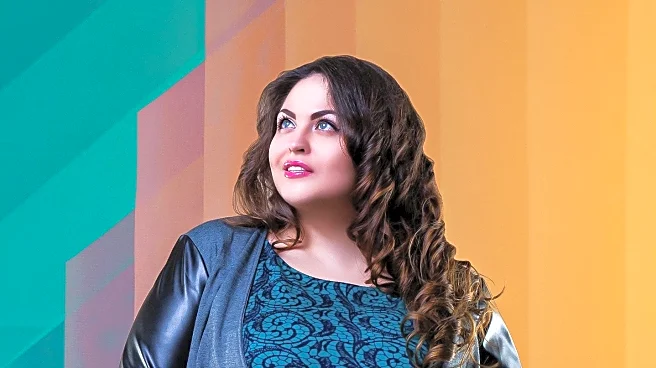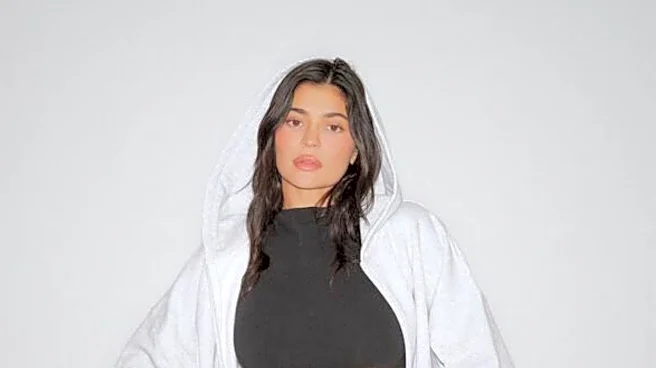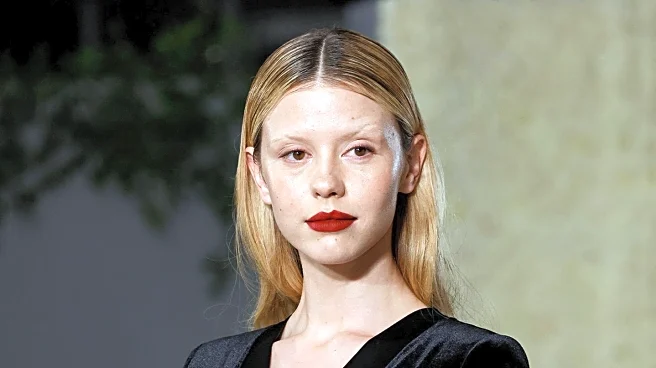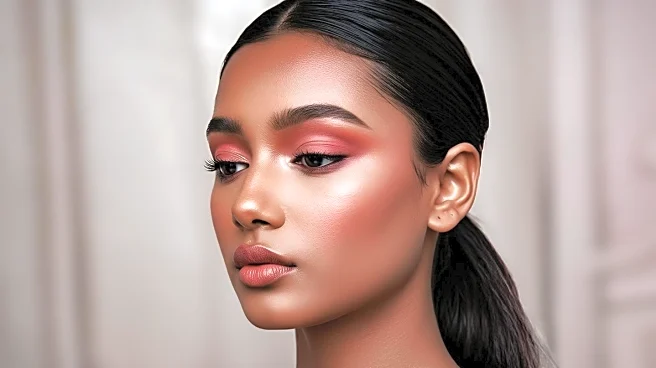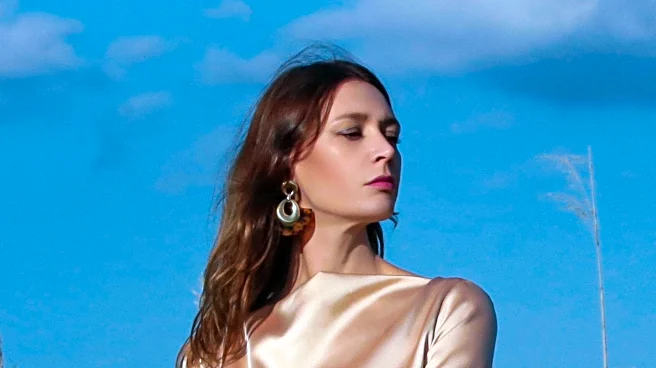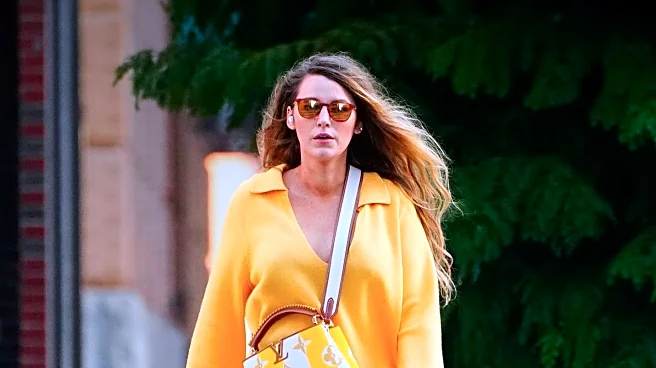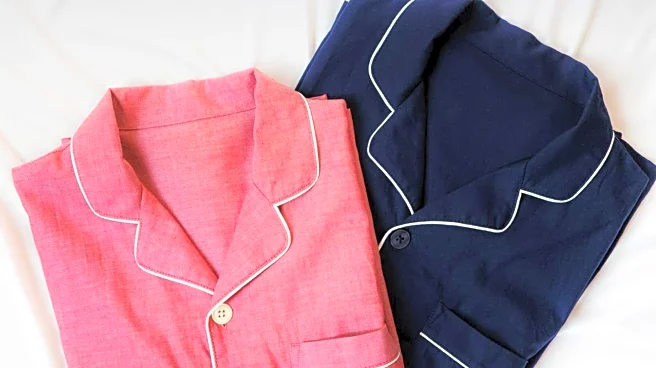What's Happening?
The gothic aesthetic is experiencing a resurgence in the fashion industry, marked by a shift towards darker styles such as corsets, radical cuts, and long coats. This trend, which has roots in the punk movement of the 1970s, has gained popularity since 2024, influenced by cultural productions like the series 'Wednesday' and films such as 'Nosferatu' and 'Beetlejuice'. The gothic style now includes variations like 'boho goth', 'Gothic Western', and 'goth glam', catering to different market segments. The upcoming autumn/winter 2026-27 season is expected to feature a new gothic trend called 'New Dynasties', characterized by dramatic, sculptural coats in black or deep red.
Why It's Important?
The revival of gothic fashion reflects broader cultural and societal shifts, including a disenchantment with established norms and a fascination with dystopian themes. This trend is significant for the fashion industry as it opens up new avenues for creativity and market expansion. Brands and designers are capitalizing on this trend, with increased sales in gothic-inspired jewelry and clothing. The gothic aesthetic's popularity also highlights the influence of media and cultural icons in shaping fashion trends, offering opportunities for collaborations and brand partnerships.
What's Next?
The gothic trend is expected to continue evolving, with new collections and collaborations anticipated. The launch of the Boloria brand by Olivier Theyskens in 2026 is set to further renew interest in romantic gothic aesthetics. As the trend gains traction, fashion brands may explore more innovative designs and marketing strategies to appeal to diverse consumer groups. The influence of gothic fashion on beauty products, such as vibrant pigments and sharp makeup, suggests potential growth in related industries.
Beyond the Headlines
The gothic trend's emphasis on dystopian themes and radical styles may reflect deeper societal concerns about the future and a desire for self-expression through fashion. This could lead to long-term shifts in consumer preferences, with increased demand for unique and unconventional designs. The trend also raises questions about the role of fashion in addressing cultural and ethical issues, as it challenges traditional norms and encourages individuality.

